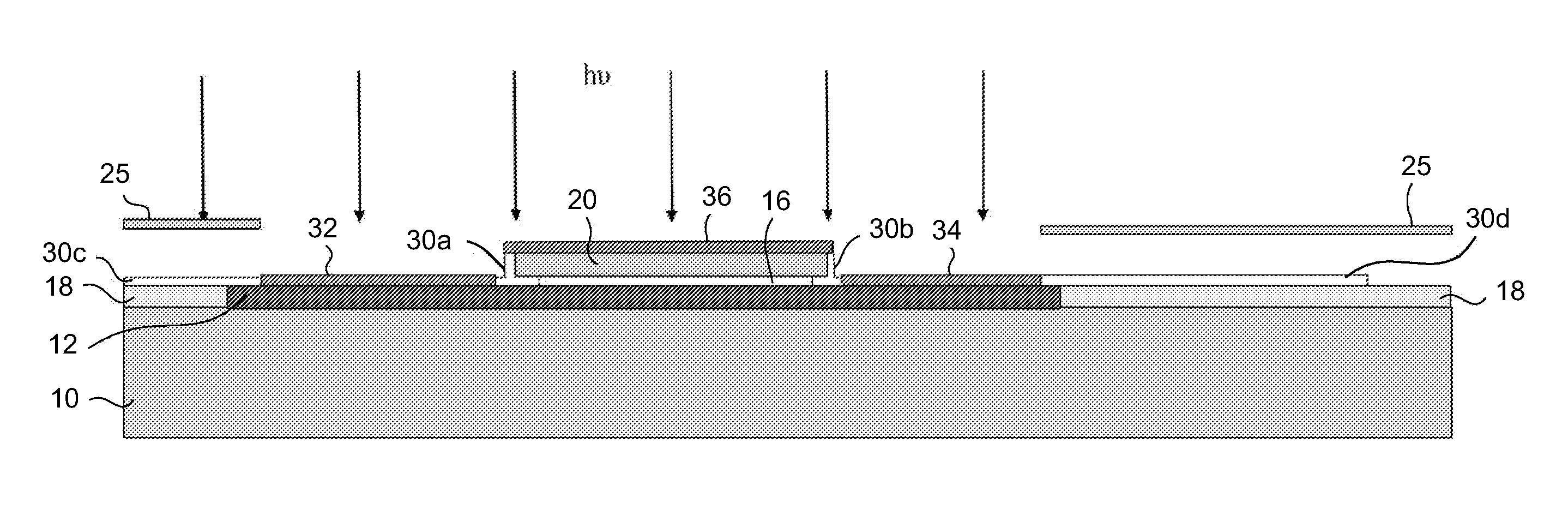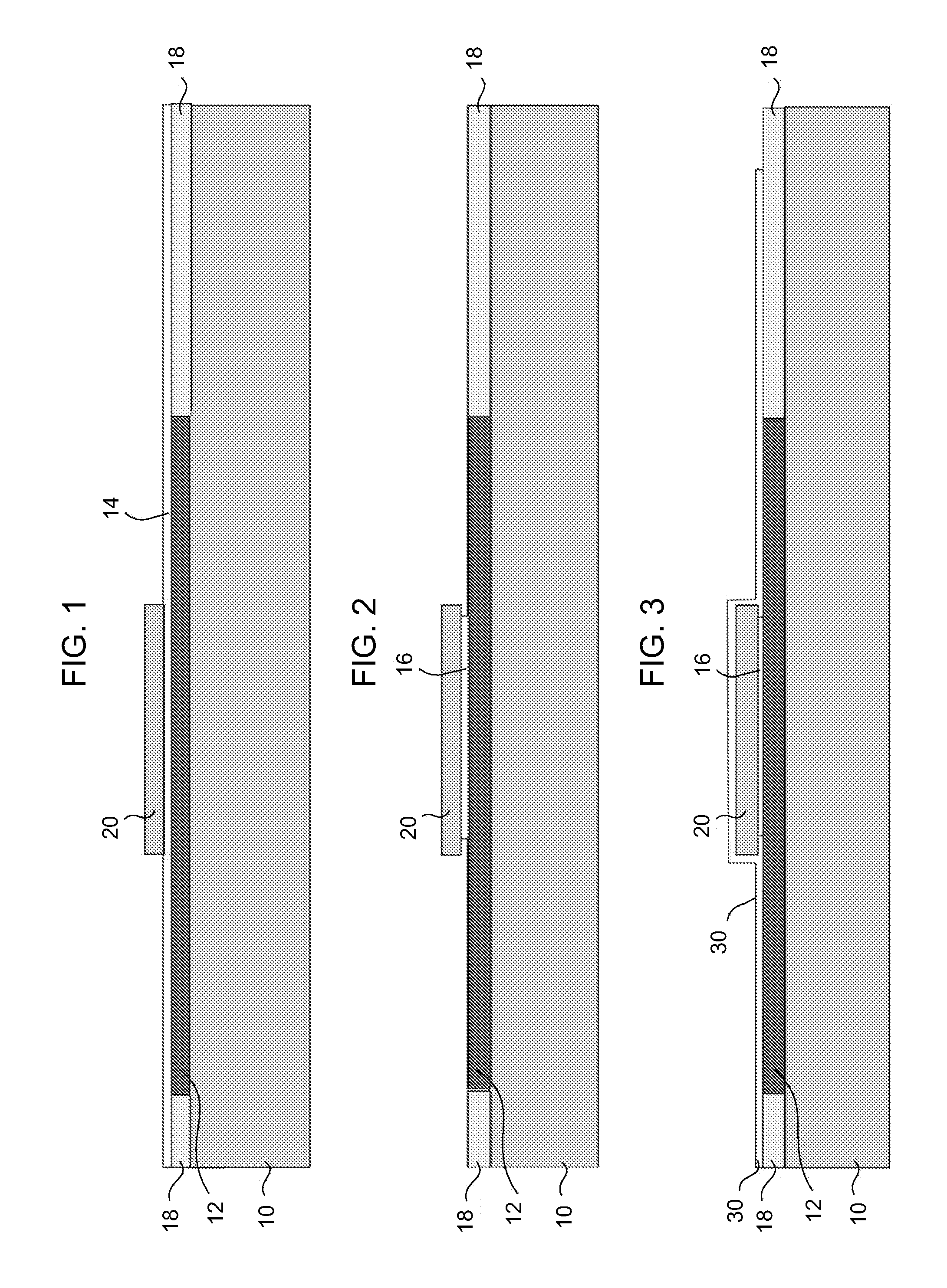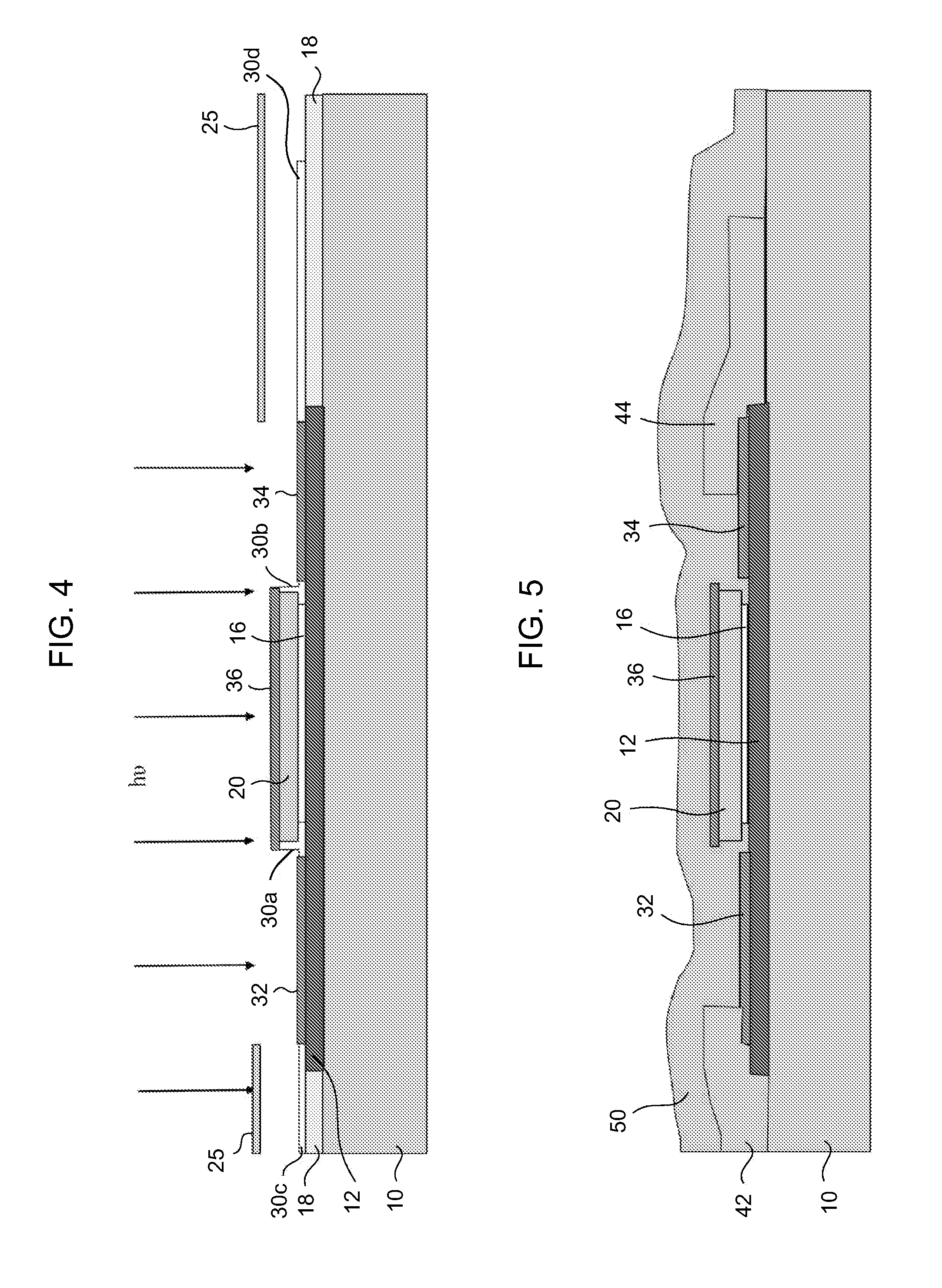MOS transistor with self-aligned source and drain, and method for making the same
a technology of metal oxidesemiconductor and self-aligning source, which is applied in the direction of basic electric elements, semiconductor devices, electrical equipment, etc., can solve the problems that the combination of known process technologies is not compatible with low-cost electronics, and achieves low cost, reliable, and commercially acceptable electrical characteristics. , the effect of low cos
- Summary
- Abstract
- Description
- Claims
- Application Information
AI Technical Summary
Benefits of technology
Problems solved by technology
Method used
Image
Examples
second embodiment
[0040]In a second embodiment, a conductor ink may be printed onto dielectric layer 14 by essentially any conventional printing technology. For example, printing may comprise inkjetting, gravure printing, offset printing, flexography (flexo-printing), spray-coating, slit coating, extrusion coating, meniscus coating, microspotting, pen-coating, and / or laser forward transferring the conductor in a predefined pattern onto dielectric layer 14. The ink may comprise or consist essentially of the metal precursor and a solvent. The metal precursors that are generally compatible with printing (or plating onto a printed conductor or semiconductor precursor) may comprise nanoparticles or nanocrystals of a metal such as titanium, copper, silver, chromium, molybdenum, tungsten, cobalt, nickel, gold, palladium, platinum, zinc, iron, etc., or metal alloys thereof, preferably silver or gold (or a metal alloy thereof). Such nanoparticles or nanocrystals may be conventionally passivated (e.g., with on...
first embodiment
[0045]The present method may further comprise the steps of forming dielectric layer 14 and / or forming electrically functional (preferably, semiconductor) layer 12. In one embodiment, semiconductor layer 12 may be formed by the same techniques as the first embodiment for forming gate metal 20, but using conventional semiconductor (or semiconductor precursor) materials for blanket deposition. As is known in the art, conventional blanket deposition may comprise chemical vapor deposition (CVD), low pressure CVD, sputtering or other physical vapor deposition (PVD) technique, spin coating, spray coating, etc. Preferably, such blanket deposition comprises CVD of a silane (e.g., SiH4) and / or germane (e.g., GeH4). The blanket-deposited semiconductor layer 12 may be lightly doped, e.g., by conventional ion implantation (and optionally, subsequent annealing). Active transistor regions (e.g., an area of semiconductor layer 12 that is substantially defined by the outermost borders of the overlyi...
PUM
 Login to View More
Login to View More Abstract
Description
Claims
Application Information
 Login to View More
Login to View More - R&D
- Intellectual Property
- Life Sciences
- Materials
- Tech Scout
- Unparalleled Data Quality
- Higher Quality Content
- 60% Fewer Hallucinations
Browse by: Latest US Patents, China's latest patents, Technical Efficacy Thesaurus, Application Domain, Technology Topic, Popular Technical Reports.
© 2025 PatSnap. All rights reserved.Legal|Privacy policy|Modern Slavery Act Transparency Statement|Sitemap|About US| Contact US: help@patsnap.com



